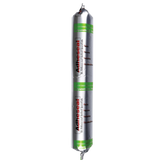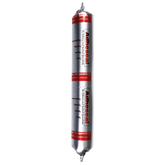Wood and Adhesives: An Adhesesal Guide to Working with Wood Substrates
Wood, a cherished and versatile building material, plays a vital role in the Australian construction industry. Its natural aesthetics, durability, and adaptability make it a preferred choice for various applications. In the context of the Australian trades industry, wood's collaboration with specific adhesives and sealants such as Polyurethanes, MS, Hybrid, Silicones, Epoxies, and Resins is of particular interest. This blog aims to provide a comprehensive understanding of wood's properties, its interaction with different adhesives, and how it performs under unique Australian environmental factors.
Scientific Analysis of Wood
Composition and Properties
Wood is primarily composed of cellulose, hemicellulose, lignin, and various natural extracts. Its anisotropic nature makes it unique in terms of strength, elasticity, and hardness, which vary based on the direction of the wood grain.
Interaction with Adhesives and Sealants
Understanding how wood bonds with different adhesives like Polyurethanes, MS, Hybrid, Silicones, Epoxies, and Resins is crucial. Factors such as wood's porosity, moisture content, and surface roughness play vital roles in adhesive performance.
Consideration of Australian Wood Types
Australia is home to diverse wood species, each with specific characteristics that affect adhesive interactions. Native species like Jarrah, Spotted Gum, and Tasmanian Oak offer unique bonding attributes that align with various applications.
Common Applications and Uses
Construction and Joinery
Wood, paired with adhesives like Polyurethanes and Epoxies, is essential in construction and joinery for building frames, flooring, cabinetry, staircases, windows, and doors.
Outdoor Structures and Landscaping
In outdoor applications, wood's interaction with weather-resistant adhesives like Silicones and Hybrids ensures stability in decking, fencing, pergolas, garden furniture, and play equipment, suited to the harsh Australian climate.
Furniture and Interior Design
Wood's natural beauty, enhanced by the use of Resins and MS adhesives, shines in furniture design, interior decorations, wall panels, decorative mouldings, and custom furnishings.
Substrates Commonly Used with Wood
Metals
In the automotive, furniture, and construction industries, wood is frequently bonded to metals using Epoxies and Polyurethanes. This combination is used in car interiors, metal-wood furniture, and architectural features.
Plastics
In the manufacturing and interior design sectors, wood-plastic combinations are prevalent. Hybrid adhesives facilitate strong bonds, suitable for decorative panels, hybrid furniture, and custom installations.
Glass
In the glazing and architectural fields, wood's interaction with glass is vital. Silicones are commonly used to bond wood to glass in windows, display cabinets, and modern architectural designs.
Other Wood Types
In carpentry, joinery, and cabinetry, different types of wood are often bonded together. Resins and MS adhesives enable creative designs, intricate woodworking, and durable constructions.
Challenges and Considerations
Moisture and Humidity
Wood's susceptibility to moisture and humidity can affect adhesive bonds. In the Australian climate, selecting the right adhesive, such as Polyurethanes, is essential to prevent degradation.
Temperature Fluctuations
Wood's expansion and contraction with temperature changes can stress bonds. Adhesives like Hybrid and Silicones that accommodate movement are crucial in areas with significant temperature variations.
Surface Preparation
Proper surface preparation, including cleaning and sanding, is vital for strong adhesive bonds. Epoxies and Resins require careful attention to wood's surface characteristics.
Compatibility with Other Substrates
Wood's interaction with metals, plastics, glass, and other wood types demands careful adhesive selection. The trades industry must consider adhesives' compatibility with different substrates to ensure lasting bonds.
Environmental and Safety Regulations
Compliance with Australian standards and regulations for VOC emissions, safety, and environmental impact is essential when selecting adhesives like MS and Silicones.
Key Takeaways
- Wood's Unique Composition: Wood's anisotropic nature and diverse Australian species offer unique bonding attributes, interacting with adhesives like Polyurethanes, MS, Hybrid, Silicones, Epoxies, and Resins.
- Versatile Applications: From construction and joinery to furniture design, wood's combination with various adhesives facilitates applications across industries.
- Challenges and Considerations: Moisture, temperature, surface preparation, compatibility, and regulations are vital factors in adhesive selection and application.
- Importance of Proper Adhesive Selection: The right choice of adhesive, considering the wood type, substrate, and environmental conditions, ensures lasting bonds and compliance with Australian standards.




